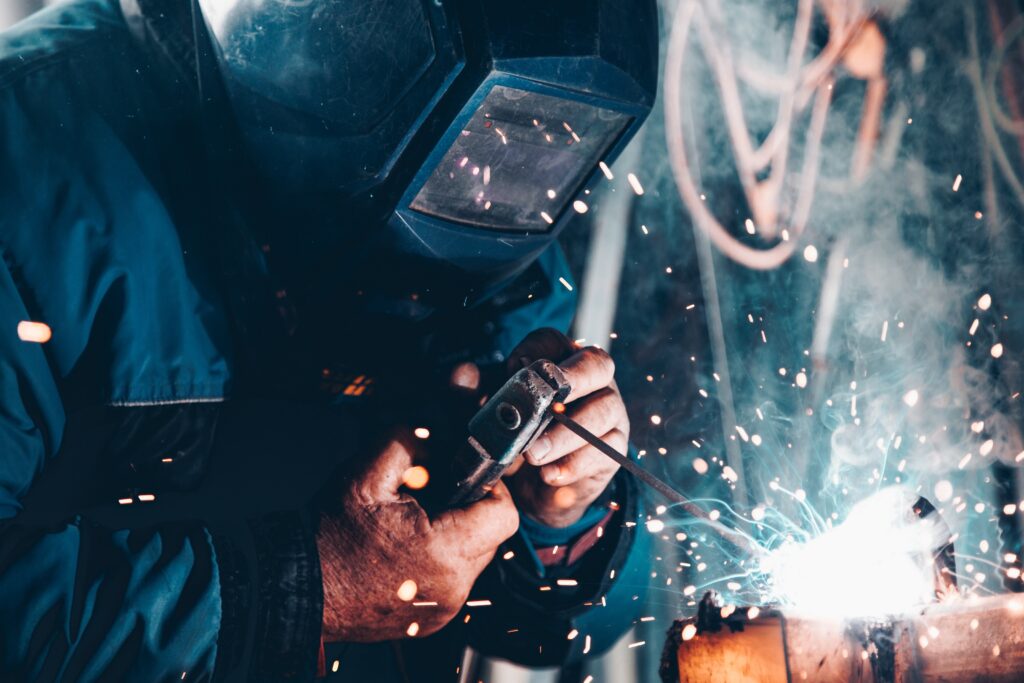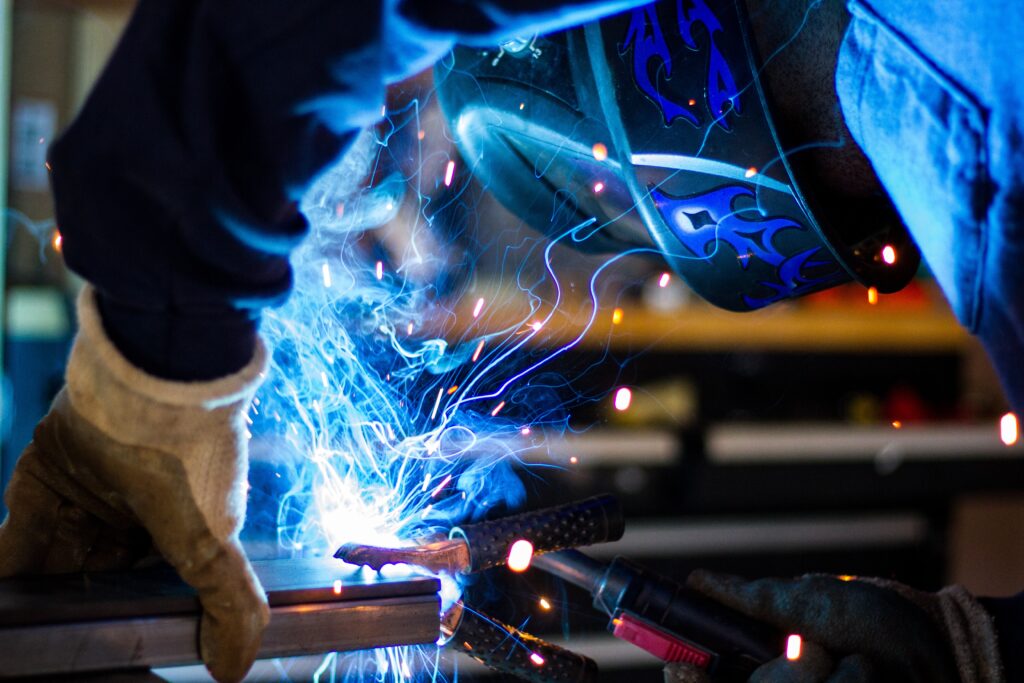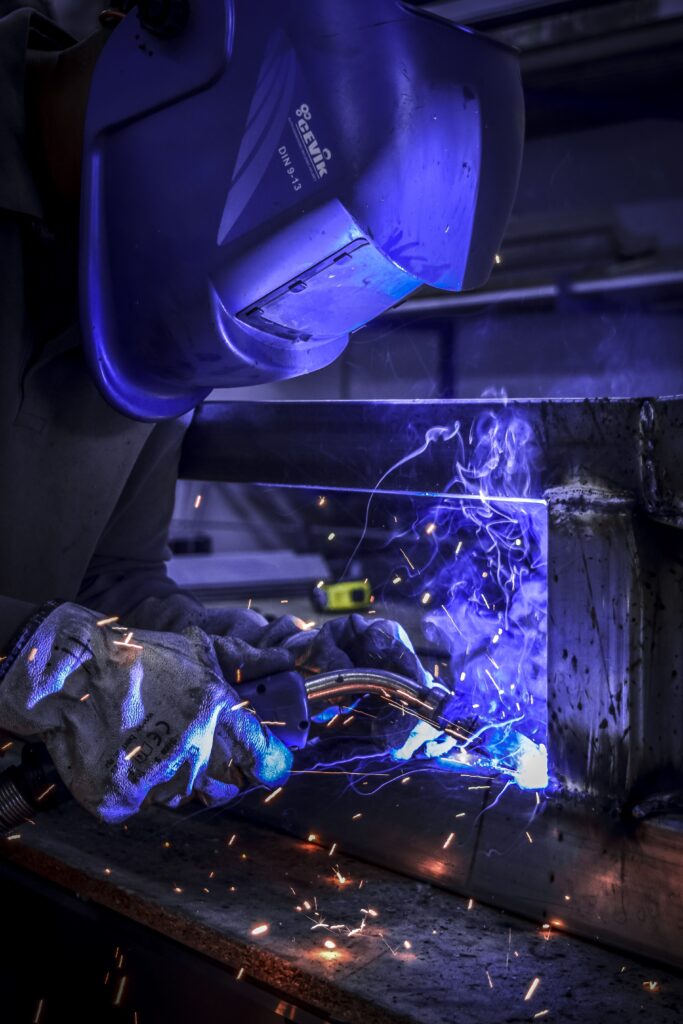Imagine arousing your curiosity about the exciting world of welding as a professional path. In our detailed analysis, “Is Welding A Hard Trade?”, we meticulously examine what makes the welding profession a unique yet challenging career choice. As you read through, you’ll discover fascinating insights that capture the essence of this field, from the complex techniques employed to the demanding physical conditions, and the level of your commitment required to excel. Prepare to illuminate your understanding of the welding trade; it’s more rewarding than one might expect.

Understanding the Welding Trade
The welding trade involves the use of various techniques to join and repair metal parts through the application of intense heat.
Definition of welding
Welding is a manufacturing process that involves the joining of separate metal pieces using heat and pressure. The heat source used in the welding process often includes electric arcs, gas flames, or lasers that create temperatures high enough to melt the metal pieces together and form a solid, durable bond.
Different types of welding
There are numerous types of welding processes, each suiting different materials and applications. The most common ones are MIG (Metal Inert Gas), TIG (Tungsten Inert Gas), stick, and flux-cored welding. Each type boasts different benefits and is suitable for various situations – some are more user-friendly, while others require a high level of skill.
Roles and responsibilities of a welder
A welder’s role is not just about connecting metals; there is a long list of responsibilities they hold. This includes understanding blueprints and measurements, inspecting structures, maintaining equipment, and ensuring all safety procedures are followed. The final quality of any product or structure heavily depends on the welder’s efficiency and skill set.
Challenges in Learning Welding
Learning to weld can be a challenging process that requires patience, practice, and a willingness to learn.
The physical demands of welding
Welding is a physically intensive profession that demands stamina and strength. It often involves standing for long hours, lifting heavy equipment, and working in uncomfortable positions.
Safety risks and hazards
With welding comes an array of safety risks, such as burns, electric shocks, and exposure to harmful gases. Hence, learning about and adhering to all the safety procedures is vital in this trade.
The need for precise skill and steady hand
Precision is key in welding. Even a minor mistake can compromise the quality of the weld, resulting in safety hazards. Therefore, developing a steady hand and attention to detail is essential.
Difficulties in understanding different welding processes
Understanding each welding process and choosing the right one for a specific job is often challenging for newbies. Each process requires different skills and delivers different results, which can be overwhelming to grasp at first.

Education and Training for Welding
Formal education and hands-on training are instrumental for aspiring welders. Employers often look for a combination of book knowledge and practical experience.
Types of welding programs
Various types of welding programs are available, ranging from high school vocational tracks to post-secondary certificates and associate degrees. The programs vary in content, length, cost, and admission requirements.
Skills learned in welding education
Welding education involves learning about different welding techniques, reading blueprints, adhering to safety regulations, using various tools, and developing math skills necessary for precise measurements.
Length and demands of training programs
The length of training programs can range from few weeks to several years, depending on the type of certificate or degree pursued. These programs demand both time and commitment and involve both theoretical learning and practical application.
Apprenticeship and hands-on training
An apprenticeship offers an opportunity to learn while working under a skilled welder. This hands-on training is a crucial part of welding education as it allows students to apply what they’ve learned in a real-world setting.
Welding Certification and Testing
Holding a welding certification can enhance your eligibility for job opportunities and demonstrate your proficiency in the welding trade.
What a welding certification entails
Welding certification involves passing a test that assesses your ability to perform specific types of welds according to industry standards. The tests can vary in complexity, depending on the certification level.
Challenges in obtaining certification
Obtaining certification can be challenging. The tests are often rigorous, requiring precision and knowledge of various welding techniques. Moreover, they can be expensive and time-consuming.
Different types of certifications available
Various certifications are available, including Certified Welder, Certified Welding Inspector, and Certified Robotic Arc Welding. Each certification targets different skills and levels of expertise.
Importance of continuous education and recertification
The welding industry continually evolves with advancements in technology and techniques. Therefore, ongoing education and recertification are crucial to stay current and competitive in the field.

Investment in Tools and Safety Gear
Investing in necessary tools and safety gear is essential to carry out welding tasks efficiently and safely.
Types of tools needed in welding
Basic tools needed in welding include a welding machine, helmet, clamps, wire brushes, and angle grinders. However, the tool list can expand based on the specific tasks and the type of welding process used.
Cost of getting started in welding
The start-up cost for welding can be significant, given the cost of welding equipment, tools, and safety gear. However, consider it as an investment that can pay off in the long run.
Importance of investing in quality safety gear
Quality safety gear is crucial to protect from potential hazards. This includes welding helmets, gloves, jackets, and proper ventilation systems.
Ongoing costs of materials and maintenance
There are recurring costs involved in welding, like buying consumables (welding wire, electrodes), gas for certain types of welding, and equipment maintenance.
Job Market and Employment Opportunities
welding offers numerous job opportunities across different industries, making it a secure career choice.
Average welding job salary
the salary of a welder can vary greatly depending on the level of experience, specialty, industry, and geographical location. However, on average, welders can expect to earn a decent income that increases with experience.
Industries that hire welders
Welders are employed in a variety of industries like construction, manufacturing, shipbuilding, aerospace, automotive, and oil and gas. Each industry presents unique opportunities and challenges.
Future job outlook for welders
The job outlook for welders remains steady as their expertise is always in demand. With an increasing impetus on infrastructure and development, the requirement for skilled welders is speculated to rise.
Geographical variations in employment opportunities
Job opportunities and pay rates can vary based on geographical location. Some geographical areas may have a high demand for welders due to industries concentrated there.
Career Advancement in Welding
The welding profession offers several paths for career advancement. With experience and additional training, many doors can open.
Paths for advancement in the welding career
Experience and expertise can lead to higher-level positions like welding supervisor, inspector, or instructor. As one gains proficiency, they could also delve into specialized forms of welding or start their own business.
Role of experience and additional training
Experience is a significant factor in career advancement. The more you weld, the more you learn and refine your skills. Additional training and certification can also help you to stand out.
Specializations and their impact on career growth
Specializing in a specific type of welding or industry can boost your career growth. Specializations often command higher salaries and open up unique job opportunities.
Mentorship and professional networking
Building relationships with seasoned welders and professionals can help you advance in your career. They can offer advice, guidance, mentorship, and potential job opportunities.
Welding as a Lifestyle
Welding is more than a job; it’s a lifestyle that entails certain health risks and can affect personal life.
Physical impact and health risks of welding
Welding can take a toll on one’s physical health. It may lead to body strain, fatigue, and exposure to harmful fumes. Long-term health risks associated with welding can include respiratory disorders, skin and eye injuries.
Effect of welding on personal lifestyle
The nature of the job can affect your personal lifestyle. Long hours, the need for physical recovery, and possible travel can impact family and social life.
Work-life balance
Maintaining a work-life balance can be challenging as jobs often demand flexibility, with periodic overtime and irregular hours.
Travel demands of the profession
Depending on the job, there may be travel demands. Some welding jobs may require you to move from one site to another, which can be both exciting and challenging.
Positive Aspects of the Welding Trade
Despite its challenges, the welding trade offers numerous benefits that make it a rewarding career.
Job satisfaction
Creating something durable and useful provides a high level of job satisfaction. This tangible result of hard work is something you can take pride in.
Sense of accomplishment
Completing a challenging weld successfully or seeing the structures that you have contributed to can offer a strong sense of achievement and motivate you to continue honing your skills.
Opportunities to engage in creative projects
Welding isn’t just about structural joints. It offers the chance to work on creative projects, like making custom furniture or unique art pieces.
High demand and job security
Due to the universal application of welding across various industries, qualified welders are in high demand, offering job security.
Conclusion: Is Welding Hard?
So, is welding a hard trade?
Weighing the challenges with the rewards
The answer depends on weighing the challenges against the rewards. Yes, it is physically demanding, carries some safety risks, requires a hefty investment, and can be tough on personal life. However, the satisfaction of creating something with your hands, the earning potential, and job security often outweigh these challenges.
Individual differences in experiencing difficulty
Everyone’s experience with learning and mastering welding will be different. Some may find it harder than others due to different learning speeds, physical capabilities, and personal circumstances.
Potential for those willing to put in the effort
However, anyone committed to learning the trade, putting in the necessary efforts, and continuously honing their skills can succeed in this profession.
The value of persistence and practice in mastering the trade
Nothing worthwhile comes easy, and the same applies to welding. With persistence, continuous learning, and lots of practice, you can not only master the trade but also build a successful and rewarding career in welding.
